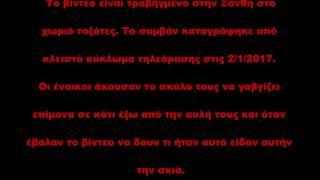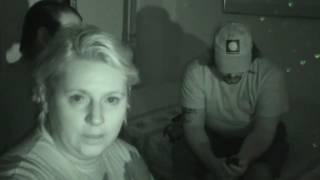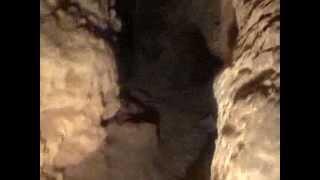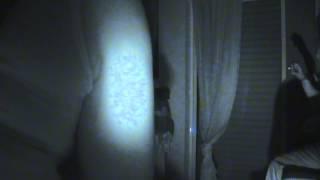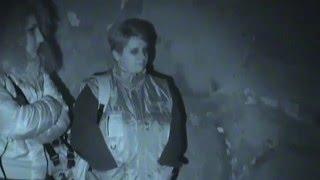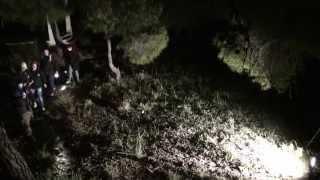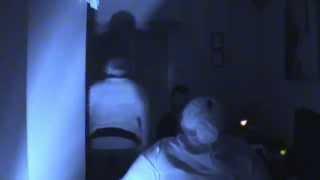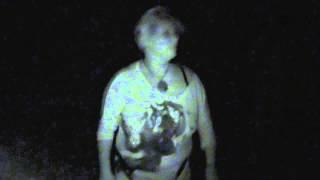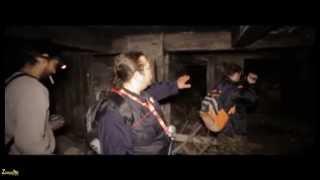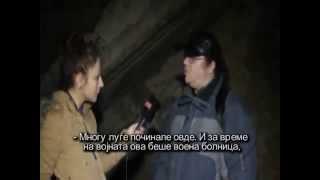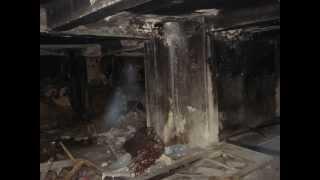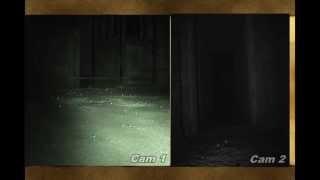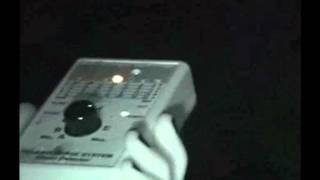Fear is an intensely unpleasant emotion in response to perceiving or recognizing a danger or threat. Fear causes physiological changes that may produce behavioral reactions such as mounting an aggressive response or fleeing the threat. Fear in human beings may occur in response to a certain stimulus occurring in the present, or in anticipation or expectation of a future threat perceived as a risk to oneself. The fear response arises from the perception of danger leading to confrontation with or escape from/avoiding the threat (also known as the fight-or-flight response), which in extreme cases of fear (horror and terror) can be a freeze response or paralysis. In humans and other animals, fear is modulated by the process of cognition and learning. Thus, fear is judged as rational or appropriate and irrational or inappropriate. An irrational fear is called a phobia.
Fear is closely related to the emotion anxiety, which occurs as the result of threats that are perceived to be uncontrollable or unavoidable.[1] The fear response serves survival by engendering appropriate behavioral responses, so it has been preserved throughout evolution.[2] Sociological and organizational research also suggests that individuals' fears are not solely dependent on their nature but are also shaped by their social relations and culture, which guide their understanding of when and how much fear to feel.[3][page needed]
Fear is sometimes considered the opposite of courage; however, this is incorrect. Because courage is a willingness to face adversity, fear is an example of a condition that makes the exercise of courage possible. Although fear behavior varies from species to species, it is often divided into two main categories; namely, avoidance/flight and immobility.[7] To these, different researchers have added different categories, such as threat display and attack,[26] protective responses (including startle and looming responses),defensive burying,[28] and social responses (including alarm vocalizations and submission).Finally, immobility is often divided into freezing and tonic immobility.
The decision as to which particular fear behavior to perform is determined by the level of fear as well as the specific context, such as environmental characteristics (escape route present, distance to refuge), the presence of a discrete and localized threat, the distance between threat and subject, threat characteristics (speed, size, directness of approach), the characteristics of the subject under threat (size, physical condition, speed, degree of crypsis, protective morphological structures), social conditions (group size), and the amount of experience with the type of the threat. Phobophobia is a phobia defined as the fear of phobias, or the fear of fear, including intense anxiety and unrealistic and persistent fear of the somatic sensations and the feared phobia ensuing. Phobophobia can also be defined as the fear of phobias or fear of developing a phobia. Phobophobia is related to anxiety disorders and panic attacks directly linked to other types of phobias, such as agoraphobia.[1] When a patient has developed phobophobia, their condition must be diagnosed and treated as part of anxiety disorders.
Phobophobia: is the fear of fear itself, but more specifically, of the internal sensations associated with that phobia and anxiety, which binds it closely to other anxiety disorders, especially with generalized anxiety disorders (free floating fears) and panic attacks. It is a condition in which anxiety disorders are maintained in an extended way, which combined with the psychological fear generated by phobophobia of encountering the feared phobia would ultimately lead to the intensifying of the effects of the feared phobia that the patient might have developed, such as agoraphobia, and specially with it,[1] and making them susceptible to having an extreme fear of panicking.[1] Phobophobia comes in between the stress the patient might be experiencing and the phobia that the patient has developed as well as the effects on his/her life, or in other words, it is a bridge between anxiety/panic the patient might be experiencing and the type of phobia he/she fears, creating an intense and extreme predisposition to the feared phobia. Nevertheless, phobophobia is not necessarily developed as part of other phobias, but can be an important factor for maintaining them.
Phobophobia differentiates itself from other kinds of phobias by the fact that there is no environmental stimulus per se, but rather internal dreadful sensations similar to psychological symptoms of panic attacks.[1] The psychological state of the mind creates an anxious response that has itself a conditioned stimuli leading to further anxiety, resulting in a vicious cycle. Phobophobia is a fear experienced before actually experiencing the fear of the feared phobias its somatic sensations that precede it, which is preceded by generalized anxiety disorders and can generate panic attack
Fear is closely related to the emotion anxiety, which occurs as the result of threats that are perceived to be uncontrollable or unavoidable.[1] The fear response serves survival by engendering appropriate behavioral responses, so it has been preserved throughout evolution.[2] Sociological and organizational research also suggests that individuals' fears are not solely dependent on their nature but are also shaped by their social relations and culture, which guide their understanding of when and how much fear to feel.[3][page needed]
Fear is sometimes considered the opposite of courage; however, this is incorrect. Because courage is a willingness to face adversity, fear is an example of a condition that makes the exercise of courage possible. Although fear behavior varies from species to species, it is often divided into two main categories; namely, avoidance/flight and immobility.[7] To these, different researchers have added different categories, such as threat display and attack,[26] protective responses (including startle and looming responses),defensive burying,[28] and social responses (including alarm vocalizations and submission).Finally, immobility is often divided into freezing and tonic immobility.
The decision as to which particular fear behavior to perform is determined by the level of fear as well as the specific context, such as environmental characteristics (escape route present, distance to refuge), the presence of a discrete and localized threat, the distance between threat and subject, threat characteristics (speed, size, directness of approach), the characteristics of the subject under threat (size, physical condition, speed, degree of crypsis, protective morphological structures), social conditions (group size), and the amount of experience with the type of the threat. Phobophobia is a phobia defined as the fear of phobias, or the fear of fear, including intense anxiety and unrealistic and persistent fear of the somatic sensations and the feared phobia ensuing. Phobophobia can also be defined as the fear of phobias or fear of developing a phobia. Phobophobia is related to anxiety disorders and panic attacks directly linked to other types of phobias, such as agoraphobia.[1] When a patient has developed phobophobia, their condition must be diagnosed and treated as part of anxiety disorders.
Phobophobia: is the fear of fear itself, but more specifically, of the internal sensations associated with that phobia and anxiety, which binds it closely to other anxiety disorders, especially with generalized anxiety disorders (free floating fears) and panic attacks. It is a condition in which anxiety disorders are maintained in an extended way, which combined with the psychological fear generated by phobophobia of encountering the feared phobia would ultimately lead to the intensifying of the effects of the feared phobia that the patient might have developed, such as agoraphobia, and specially with it,[1] and making them susceptible to having an extreme fear of panicking.[1] Phobophobia comes in between the stress the patient might be experiencing and the phobia that the patient has developed as well as the effects on his/her life, or in other words, it is a bridge between anxiety/panic the patient might be experiencing and the type of phobia he/she fears, creating an intense and extreme predisposition to the feared phobia. Nevertheless, phobophobia is not necessarily developed as part of other phobias, but can be an important factor for maintaining them.
Phobophobia differentiates itself from other kinds of phobias by the fact that there is no environmental stimulus per se, but rather internal dreadful sensations similar to psychological symptoms of panic attacks.[1] The psychological state of the mind creates an anxious response that has itself a conditioned stimuli leading to further anxiety, resulting in a vicious cycle. Phobophobia is a fear experienced before actually experiencing the fear of the feared phobias its somatic sensations that precede it, which is preceded by generalized anxiety disorders and can generate panic attack
Sign in or sign up to post comments.
Be the first to comment


![[ ENQUETE PARANORMALE ] SAISON 2 - EPISODE 12 : SOUS TENSION](https://paranormal-videos.com/templates/apollo/img/melody-lzld.png)
